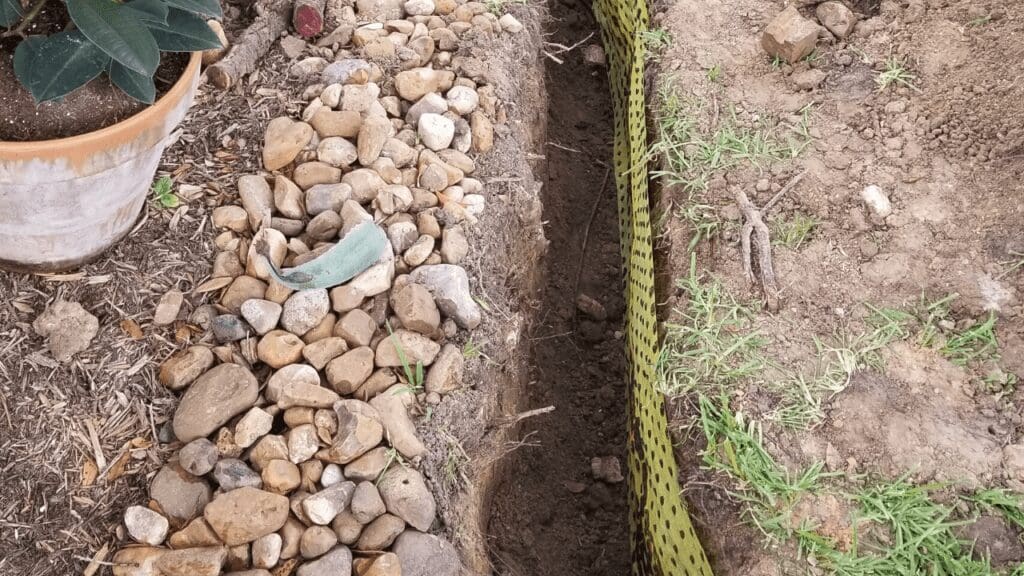French drains may sound fancy, but they are actually very basic! These drains are nothing more than a gravel-lined ditch, with a pipe that is created to carry water away from the home. This is designed to keep water from affecting the foundation and giving you further problems.
What is a French Drain?
French drains are the ground-level alternative to gutters. Gutters manage where the water goes after a rainstorm – French Drains do the same on the ground. That means that if water tends to pool in certain spots in your yard, a French Drain will reroute all of the water and resolve that issue. French Drains are also a great solution for when water presses up against a foundation. This can cause leaks and foundational problems, which is something that should be addressed before any damage happens. French drains are trenches that are generally filled with gravel or rock. They are an alternative to open ditches or storm sewers, and often look far nicer!
Key Steps for Effective Digging Preparation for Drainage
To start, a trench is dug! The trench should slope in the direction that you want the water to go. Generally, the rule of thumb is that there should be a slope of one inch for every eight feet in length. The way that the angle is measured, is by using a level string between stakes. This device is then used to measure the distance from the reference point to the bottom of the trench. There is also a need for a certain diameter! It is generally suggested that a French drain should be no less than 12 inches wide, and should be somewhere between 18 and 24 inches. It is also important to think about where you want the water to go. If there is an existing area with water, such as a pond or other body of water, that is ideal. However, the water can easily be rerouted curbside if that is the easiest solution for your situation or location.
Filling and Piping
After digging, it is time for filling! The first step is to fill the trench with a few inches of stone, rock, or pebble. After the stone has been placed, there should be a layer of some kind of water-permeable landscaping fabric. This will keep weeds from growing up through your drain! The next step is to lay pipe into the trench. There are usually two kinds of pipes used, and whichever you use has its own pros and cons! Rigid PVC is an option, one that comes with predrilled holes. Or, you can use a flexible drain pipe that has slits cut into it. PVC lasts longer, and can easily be cleaned out if there is ever a clog. A flexible pipe, however, is less expensive and slightly easier to work with. PVC pipe requires a little extra work because there needs to be a section of pipe left sticking out of the ground in order to guarantee an easy-access cleaning point. French drain piping should also be placed hole side down, though many may think the opposite! The next step is to wrap landscaping fabric around the pipe, which will keep dirt and roots from clogging up the system. The last step is to refill the trench with gravel according to the grade of the trench! Another option is to use gravel, leave a few inches of space, and then add dirt to fill the remaining space.
A French drain could be an instrumental part of saving yourfoundation from harm! Installing a French drain is relatively easy, and generally easier than having to do a foundation repair. For any concerns about your foundation, reach out to Allied today for a free inspection and estimate!



